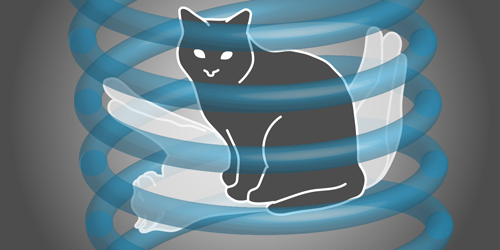A Macroscopic Probe of Quantum States
The magnetic susceptibility of a material quantifies how much the material is magnetized when exposed to a magnetic field. This macroscopic property results from the contributions of many microscopic quantum states with nonzero magnetic moments. A typical susceptibility measurement, however, yields a value that averages over the statistical ensemble of all states—it cannot deliver information on the populations of specific quantum states. Now, a team at Cardiff University and University College London, both in the UK, shows that, in a particular magnetic system, a susceptibility measurement can directly probe the populations of two spin states [1]. The idea could allow researchers to use simple susceptibility measurements to study the quantum-state dynamics of exotic magnetic materials.
The researchers study a “dilute spin ice” consisting of ions arranged on a tetrahedral lattice. With a small number of these ions possessing a large electronic spin, the material can be described as a simple two-level (spin-up–spin-down) system. These spins, and their coupling to other excitations in the material, contribute to the measured susceptibility, and the different contributions can be isolated by changing the frequency of an applied magnetic field. In particular, above several kHz, the magnetic susceptibility is unaffected by slow relaxation mechanisms that involve spin-spin and spin-lattice interactions. With these mechanisms excluded, the team shows that the measured susceptibility is directly related to the difference between the populations of the spin-up and spin-down states. To create such a difference, they bring the system to temperatures as low as 76 mK. They then quantify the population imbalance from susceptibility measurements. The researchers suggest that next-generation susceptometers reaching MHz frequencies could make the technique applicable to more complex materials.
–Matteo Rini
Matteo Rini is the Editor of Physics Magazine.
References
- D. Billington et al., “Experimental measurement of the isolated magnetic susceptibility,” Phys. Rev. B 104, 014418 (2021).




